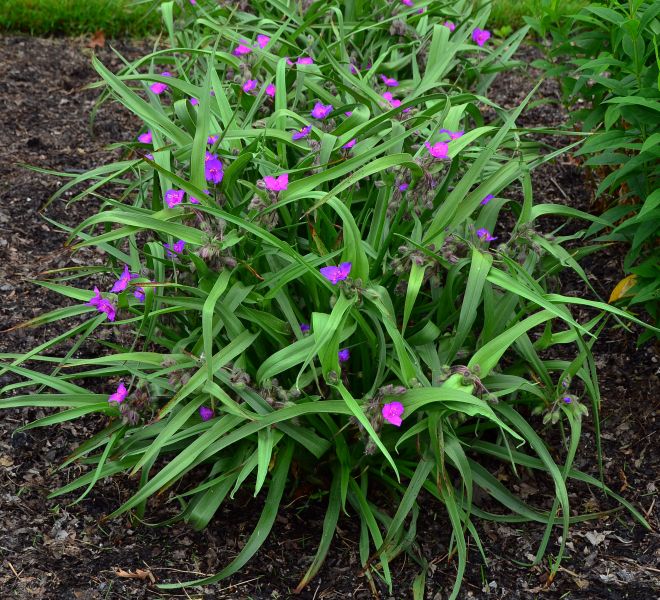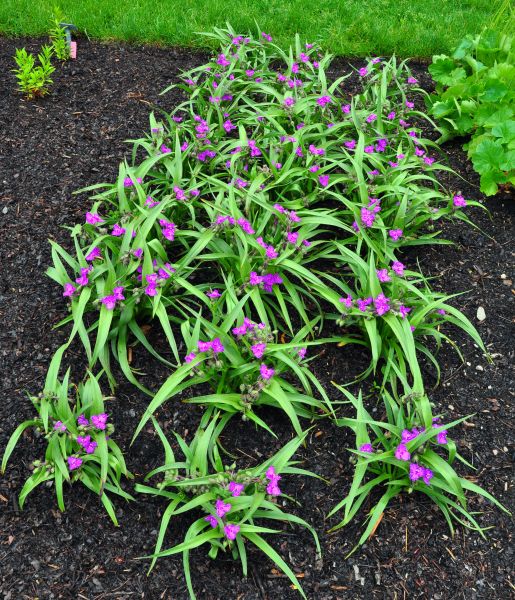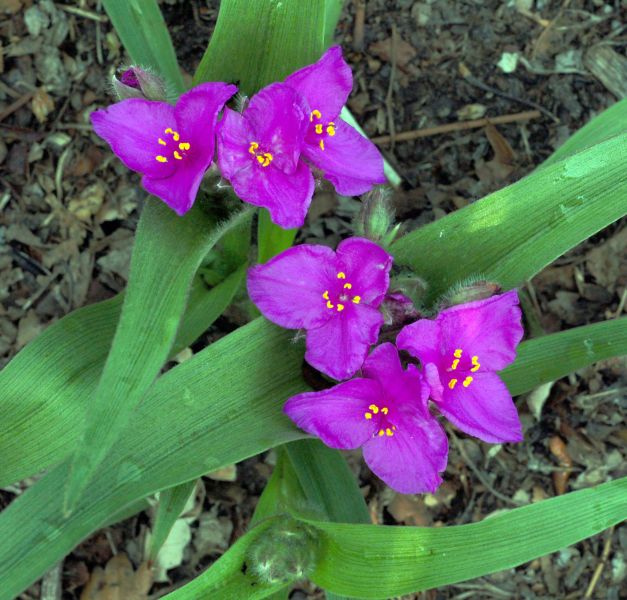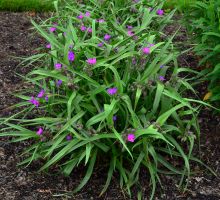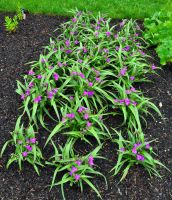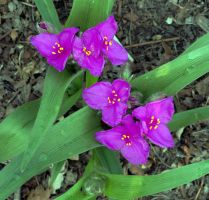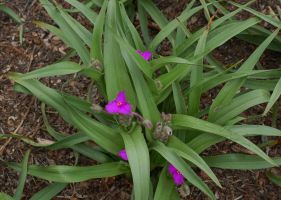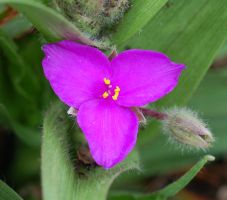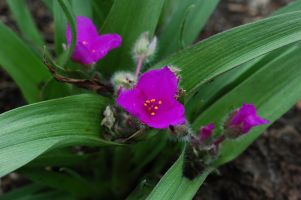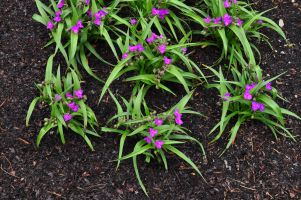Tradescantia Tough Love
Magenta-purple flowers and drought tolerant.
The vivid red-purple flowers are conspicuously displayed on the top of each stem of this densely branched spiderwort. At 9 inches of height, this is one of the more compact selections in the market. The leathery, stiff leaves make for an attractive and neat plant. This selection’s superior drought tolerance and habitat adaptability ensure that it still remains attractive in situations where other spiderworts would become ragged in appearance. Up close you can appreciate the heavy pubescence that coats the foliage, stems, flower buds, and pedicels. Most of the cultivated spiderworts are developed from eastern species common to semi shaded, moist habitats. Not Tradescantia ‘Tough Love’! Derived from two hardy and rugged, yet showy, species from the Great Plains and the Midwest, this hybrid proves to be more compact, drought tolerant, and sun adaptable than most spiderworts. Tough love indeed! Full sun and a well-drained, moderately moist to dry soil is recommended. Drought tolerant once established. This plant has performed equally well on heavy alkaline clay garden soil and in a raised sand bed at the Chicago Botanic Garden. It should grow very well in rocky soils as well. In a severe summer drought, the foliage may go briefly dormant, to be replaced by fresh foliage with the onset of moisture or cooler early autumn days. Plants that become ragged in appearance can be renewed by cutting to the ground. Mature plants remain in tight clumps, precluding the need for any dividing except to propagate more plants. The intense red-purple flowers will definitely get your attention in spring. Plants remain neat in appearance and as the season progresses, don’t get the droopy, bedraggled look of taller spiderworts. Use this durable selection in front of a sunny border, on slopes, in rock gardens, in prairie gardens, or in other equivalent sites. Plant in small sweeps as it is a compact selection; yet pay attention to the possibility it could create a temporary hole in the midsummer garden if it goes dormant.
Who Am I?
-
Common Name:Tough Love spiderwort
-
Botanical Name:Tradescantia 'Tough Love' PP25988
-
Type:Perennial
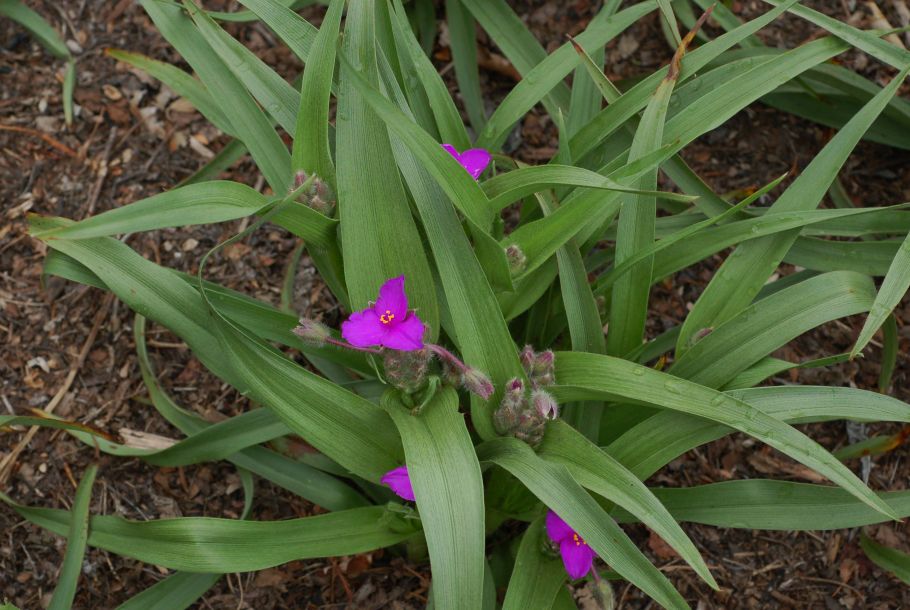
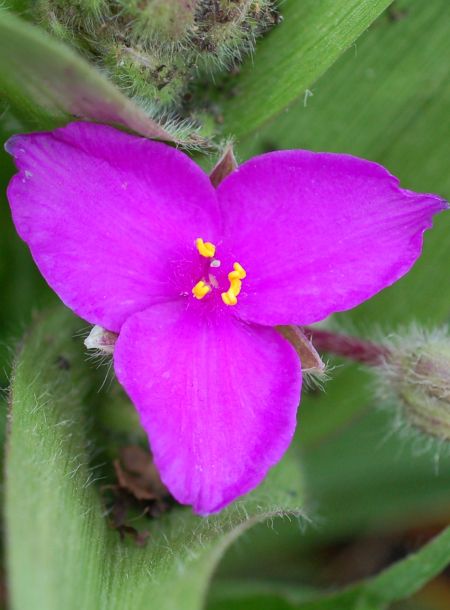
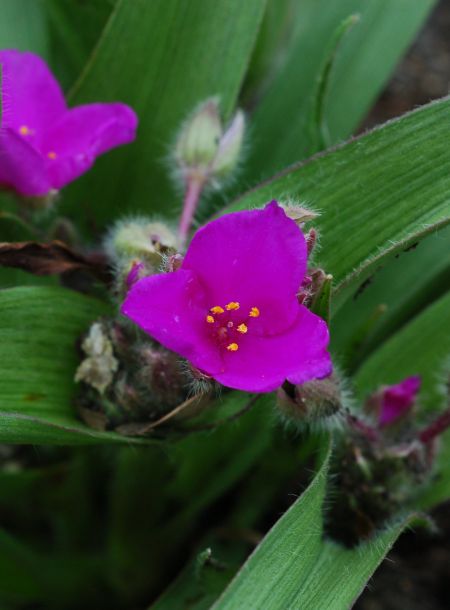
Cultural Details
TYPE
-
Light:Full sun
-
Soil:Adaptable to many gaden soils including heavy clay and alkaline soils.
-
Moisture:Well-drained to modertly moist. Drought tolerant once established.
-
Hardiness Zone4-8
-
Bloom Time:Late spring
-
Bloom Color:Grape
-
Size:9" tall by 15" wide
-
Diseases & Pests:Good resistance to foliar rust.
What Makes Me Special?
Landscape Use
Origin
The parents of this hybrid spiderwort are an open-pollinated hybrid seedling of Tradescantia tharpii and Tradescantia occidentalis. Both of these species come from dry clay, rock, or sand prairies in midwestern and Great Plains states. As a result, this hybrid has dramatically different adaptability from the cultivated spiderwort hybrids derived from more mesic and shaded habitats of the eastern United States. Selected in 2009 from a cross made in 2006 at the Chicago Botanic Garden by Jim Ault, Ph.D.
